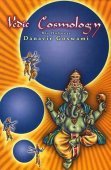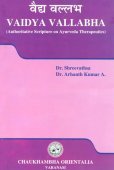Siromani, Siromaṇi, Shiromani: 15 definitions
Introduction:
Siromani means something in Buddhism, Pali, Hinduism, Sanskrit, Marathi, Hindi, Tamil. If you want to know the exact meaning, history, etymology or English translation of this term then check out the descriptions on this page. Add your comment or reference to a book if you want to contribute to this summary article.
In Hinduism
Purana and Itihasa (epic history)
Source: archive.org: Shiva Purana - English TranslationŚiromaṇi (शिरोमणि) refers to a “crest-jewel”, according to the Śivapurāṇa 2.3.12.—Accordingly, after Himācala (i.e., Himālaya) brought his daughter (Pārvatī) before Śiva: “Then Śiva looked at her in the first flush of her youth. [...] Her two breasts resembling lotus-buds were stout, plump and firm. Her waist was slender and the curly locks of her hair shone well. Her feet resembled the land-lotus and were comely in appearance. She was competent to shake the minds of even the sages deeply engrossed in meditation, even at the very sight. She was a crest-jewel of all the maidens [i.e., yoṣidgaṇa-śiromaṇi] in the world”.

The Purana (पुराण, purāṇas) refers to Sanskrit literature preserving ancient India’s vast cultural history, including historical legends, religious ceremonies, various arts and sciences. The eighteen mahapuranas total over 400,000 shlokas (metrical couplets) and date to at least several centuries BCE.
In Buddhism
Tibetan Buddhism (Vajrayana or tantric Buddhism)
Source: OSU Press: Cakrasamvara SamadhiŚiromaṇi (शिरोमणि) refers to “(possesing) a crest jewel” which is used to describe Cakrasaṃvara, according to the Saṃvaramaṇḍala of Abhayākaragupta’s Niṣpannayogāvalī, p. 45 and n. 145; (Cf. Cakrasaṃvaratantra, Gray, David B., 2007).—Accordingly, [while describing the iconography of Cakrasaṃvara]: “In the Saṃvara Maṇḍala atop Mount Sumera within a vajra-canopy there is a variegated lotus, on top of that a palace, in the middle of which is the Blessed Lord, standing in ālīḍhāsana, "archer's pose", [...] possessing a naraśiromālā-śatārdha, "garland of fifty (fresh) human heads" around the neck, the ṣaṇmudrā, "six insignia", bone ornaments, which are the kaṇṭhikā, "necklace", rucaka, "bracelets", kuṇḍala, "ear-rings", mekhalā, "girdle", śiromaṇi, "crest jewel", and bhasmitiḥ, "covered in ashes", a jaṭā-makuṭa, "crest of dreadlocks", kapālamālā, "crown of (five) skulls", topped by an ardhacandra, "crescent moon", and viśvavajra, "world vajra" or "double vajra", a vikṛitānana, "fierce face", and daṃṣṭrotkaṭa, "horrible gigantic fangs".

Tibetan Buddhism includes schools such as Nyingma, Kadampa, Kagyu and Gelug. Their primary canon of literature is divided in two broad categories: The Kangyur, which consists of Buddha’s words, and the Tengyur, which includes commentaries from various sources. Esotericism and tantra techniques (vajrayāna) are collected indepently.
Languages of India and abroad
Pali-English dictionary
Source: BuddhaSasana: Concise Pali-English Dictionarysiromaṇi : (m.) a diadem; a jewelled crest.

Pali is the language of the Tipiṭaka, which is the sacred canon of Theravāda Buddhism and contains much of the Buddha’s speech. Closeley related to Sanskrit, both languages are used interchangeably between religions.
Marathi-English dictionary
Source: DDSA: The Molesworth Marathi and English Dictionaryśirōmaṇi (शिरोमणि).—m (S) A gem worn in a crest, or on the top of the head. 2 fig. The head, chief, most eminent or distinguished person; as paṇḍitaśirō- maṇi The head-gem or brightest ornament of a body of learned men; mūrkhaśirōmaṇi The crown or king of blockheads; adattaśirōmaṇi The prince of misers; śūraśirōmaṇi, sōdāśirōmaṇi &c.
Source: DDSA: The Aryabhusan school dictionary, Marathi-Englishśirōmaṇi (शिरोमणि).—m A gem worn in a crest. Fig. The chief. murkhaśirōmaṇi The king of blockheads.
Marathi is an Indo-European language having over 70 million native speakers people in (predominantly) Maharashtra India. Marathi, like many other Indo-Aryan languages, evolved from early forms of Prakrit, which itself is a subset of Sanskrit, one of the most ancient languages of the world.
Sanskrit dictionary
Source: Cologne Digital Sanskrit Dictionaries: Shabda-Sagara Sanskrit-English DictionaryŚiromaṇi (शिरोमणि).—mf. (-ṇiḥ-ṇī) 1. A gem worn in a crest, or on the top of the head. 2. A title of respect conferred on learned men. E. śiras the head, and maṇi a jewel.
Source: Cologne Digital Sanskrit Dictionaries: Cappeller Sanskrit-English DictionaryŚiromaṇi (शिरोमणि).—[masculine] crest-jewel; the crown, i.e. the first or chief of ([genetive] or —°).
Source: Cologne Digital Sanskrit Dictionaries: Aufrecht Catalogus Catalogorum1) Śiromaṇi (शिरोमणि) as mentioned in Aufrecht’s Catalogus Catalogorum:—a
—[commentary] on Gaṅgeśa’s Tattvacintāmaṇi, by Raghunātha Śiromaṇi. [Mackenzie Collection] 18. Hall. p. 31. Khn. 62. K. 148. B. 4, 32. Ben. 154. 164. 178. 179. 181. 191. 192. 205. 209. Pheh. 14. Rādh. 15. Oudh. Xv, 98. Np. I, 36. 38. Burnell. 115^b. P. 14. Bhk. 32. Oppert. 212. 2066-68. 3234. 3280. 3505. Ii, 1454. 2487. 3667. 5509. 6299. 7592. 7877. 8645. Rice. 106. Pratyakṣa. Paris. (B 34. 148^a). Ben. 154. Oppert. 3446. 8011. Ii, 5976.
—[commentary] by Gadādhara. Paris. (B 36). L. 1053. 2486.
—[commentary] by Vācaspati. Rādh. 14. Anumāna. Io. 273. 1902. W. p. 197. Oxf. 241^a. Hall. p. 37. Paris. (B 148^b. 149). L. 781. 1052. Khn. 60. Ben. 185. Tu7b. 5. NW. 354. Oudh. Ix, 14. Bh. 32. Bhr. 740. Oppert. 2268. 8010. Ii, 8802. Bühler 555.
—[commentary] by Gadādhara. Paris. (B 35. 37). L. 1006. Oppert. Ii, 3571. 8803. Sb. 168. See Anumitidīdhitiṭippaṇī.
—[commentary] by Govardhana. Oudh. V, 18.
—[commentary] by Jagadīśa. Sb. 174.
—[commentary] by Bhavānanda. Ben. 149. Oppert. Ii, 3570. Bühler 555.
—[commentary] by Mathurānātha. Rādh. 11.
—[sub-commentary] L. 1004. 1005. Upamāna. Oppert. Ii, 9562. Śabda. Oppert. 3447. Ii, 5977. Sb. 178. 184.
—[commentary] by Mathurānātha. L. 367. Khn. 66. Ben. 177. Commentaries.
—[commentary] Ben. 186. 187. Rādh. 6.
—[commentary] by Kāśīnātha. Ben. 174 ([fragmentary]).
—[commentary] Prasāriṇī by Kṛṣṇadāsa. Burnell. 117^a.
—[commentary] by Gadādhara. Io. 1707. K. 144. Ben. 170. 226. Rādh. 15. Oudh. Xv, 94. Np. I, 116. 126. Bhr. 280. Oppert. 755. 1250. 3250. 3261. 7650. 7697. 7920. Ii, 1084. Rice. 100. Bp. 306. See Gādādharī.
—[commentary] by Jagadīśa. See Jāgadīśī.
—[commentary] by Jayarāma. W. p. 198. Hall. p. 34. Ben. 163. Rādh. 13. 15.
—[commentary] by Nīlakaṇṭha Śāstrin. Hall. p. 31. Oppert. 514. 547. 1252.
—[commentary] Vedalakṣaṇa by Nṛsiṃha. Oudh. Xv, 106.
—[commentary] Tattvacintāmaṇidīdhitigūḍhārthaprakāśikā by Bhavānanda. [Mackenzie Collection] 18. Hall. p. 37. Io. 336. 337. K. 154. 156. B. 4, 32. Ben. 180. 187. Rādh. 15. NW. 356. Np. I, 116. 120. 124. Oppert. 1253. 1955. 2070. Ii, 3282. 4289. Bp. 306. Anumāna. L. 781. 849. 2916. Ben. 167. Burnell. 116^a. Oppert. Ii, 3570. See Bhavānandī.
—[commentary] by Mathurānātha. K. 156. Ben. 176. 182. 183. 228. Np. I, 116. 124. Burnell. 116^b. Mysore. 5. Oppert. 787. 1254. 5547. 5637. 5696. Ii, 8495. See Māthurī.
—[commentary] by Maheśvara. Ben. 188 (Prāmāṇyavāda).
—[commentary] by Yativarya. Hall. p. 34.
—[commentary] Līlāvatī by Rāmakṛṣṇa. Burnell. 116^a.
—[commentary] by Rudra Bhaṭṭa. Hall. p. 34. L. 1547 (Pratyakṣa). Ben. 186. 187. Rādh. 14 (Pratyakṣa). 15. Oudh. X, 16. Np. I, 118. 126.
Śiromaṇi has the following synonyms: Tattvacintāmaṇidīdhiti.
2) Śiromaṇi (शिरोमणि):—alone, a title of the logician Raghunātha.
Śiromaṇi has the following synonyms: Bhaṭṭācāryaśiromaṇi.
3) Śiromaṇi (शिरोमणि):—abridged from Siddhāntaśiromaṇi.
4) Śiromaṇi (शिरोमणि):—a title of the logician Raghunātha, is often used by negligent writers for his principal work the Tattvacintāmaṇidīdhiti or parts of it. Kāṭm. 4. Oppert. 212. 2066-68. 3234. 3280. 3505. Ii, 675. 2279. 5582. 6861. 7246. 8965. 9370. 9676. 9997. Śiromaṇyupodghāta. Oppert. Ii, 9677.
5) Śiromaṇi (शिरोमणि):—Jñānānandataraṅgiṇī.
6) Śiromaṇi (शिरोमणि):—Sarvadarśanaśiromaṇi.
Source: Cologne Digital Sanskrit Dictionaries: Monier-Williams Sanskrit-English Dictionary1) Śiromaṇi (शिरोमणि):—[=śiro-maṇi] [from śiro > śiras] m. ‘crest-jewel’, a jewel worn on the h°, [Ṛtusaṃhāra; Varāha-mihira’s Bṛhat-saṃhitā] etc.
2) [v.s. ...] the chief of ([genitive case] or [compound]; -tā f.), [Pañcarātra; Kathāsaritsāgara; Hemacandra’s Pariśiṣṭaparvan] etc.
3) [v.s. ...] a title of honour conferred on Paṇḍits, [Monier-Williams’ Sanskrit-English Dictionary]
4) [v.s. ...] Name of the chief [work] on any subject and of various eminent scholars, [Catalogue(s)]
Source: Cologne Digital Sanskrit Dictionaries: Yates Sanskrit-English DictionaryŚiromaṇi (शिरोमणि):—[śiro-maṇi] (ṇiḥ) 2. m. f. A gem worn in a crest, or on the head.
[Sanskrit to German]
Sanskrit, also spelled संस्कृतम् (saṃskṛtam), is an ancient language of India commonly seen as the grandmother of the Indo-European language family (even English!). Closely allied with Prakrit and Pali, Sanskrit is more exhaustive in both grammar and terms and has the most extensive collection of literature in the world, greatly surpassing its sister-languages Greek and Latin.
Hindi dictionary
Source: DDSA: A practical Hindi-English dictionaryŚiromaṇi (शिरोमणि):—(nm) the most outstanding person; the chief (of) (as [kavi-śiromaṇi]); a jewel worn in a diadem or crown.
...
Kannada-English dictionary
Source: Alar: Kannada-English corpusŚirōmaṇi (ಶಿರೋಮಣಿ):—
1) [noun] a small flat ornament, with a jewel, worn as a frontlet at the partition of hair in combing.
2) [noun] a person or thing that is par excellent in a particular class.
Kannada is a Dravidian language (as opposed to the Indo-European language family) mainly spoken in the southwestern region of India.
Tamil dictionary
Source: DDSA: University of Madras: Tamil LexiconŚirōmaṇi (ஶிரோமணி) [śirō-maṇi] noun < śirō-maṇi. See சிரோமணிமேகலை [siromani.]
Tamil is an ancient language of India from the Dravidian family spoken by roughly 250 million people mainly in southern India and Sri Lanka.
Nepali dictionary
Source: unoes: Nepali-English DictionaryŚiromaṇi (शिरोमणि):—n. 1. a jewel for the head; diadem; a crown; 2. a prominent/reverend person; a title given to the personalities of literature, history, etc.;
Nepali is the primary language of the Nepalese people counting almost 20 million native speakers. The country of Nepal is situated in the Himalaya mountain range to the north of India.
See also (Relevant definitions)
Partial matches: Shiras, Mani.
Starts with: Ciromani, Shiromani bhatta, Shiromani bhattacarya, Shiromanibhatta, Shiromanibhattacarya, Shiromanikhandana, Shiromanimathuranathiya, Shiromaninyayanusarivivriti, Shiromanita, Shiromanivyakhya.
Ends with (+21): Alamkarashiromani, Anupanarayana tarkashiromani, Bhattacaryashiromani, Ciromani, Daivajnashiromani, Govindarama vidyashiromani, Gunashiromani, Jatakashiromani, Jyotpattishiromani, Karanashiromani, Khalashiromani, Kuttakarashiromani, Mimamsashiromani, Muhurtashiromani, Nanshiromani, Nyayashiromani, Panditashiromani, Paribhashashiromani, Pramanyashiromani, Pramanyavadashiromani.
Full-text (+72): Shiroratna, Shiromanita, Taddhitakosha, Shiromaninyayanusarivivriti, Shiromanivyakhya, Shiromanikhandana, Shiromanimathuranathiya, Shiromanibhattacarya, Shiromanibhatta, Sarvadarshanashiromani, Bhattacaryashiromani, Tinantashiromani, Nanshiromani, Daivajnashiromani, Siddhantakaumudi, Cirorattinam, Shikharamani, Siddhantashiromaniprakasha, Siddhantashiromanivasanavarttika, Shiromani bhatta.
Relevant text
Search found 35 books and stories containing Siromani, Siromaṇi, Shiromani, Śirōmaṇi, Śiromaṇi, Shiro-mani, Śiro-maṇi, Siro-mani, Śirō-maṇi, Shiraomani; (plurals include: Siromanis, Siromaṇis, Shiromanis, Śirōmaṇis, Śiromaṇis, manis, maṇis, Shiraomanis). You can also click to the full overview containing English textual excerpts. Below are direct links for the most relevant articles:
Garga Samhita (English) (by Danavir Goswami)
Verses 2.20.13-16 < [Chapter 20 - The Rāsa-dance Pastime]
Verse 2.10.5 < [Chapter 10 - Description of Śrī Kṛṣṇa’s Herding the Cows]
Bhakti-rasamrta-sindhu (by Śrīla Rūpa Gosvāmī)
Verse 3.1.9 < [Part 1 - Neutral Love of God (śānta-rasa)]
The validity of Anumana (inference) in Nyaya system (by Babu C. D)
Chapter 4.3.6 - Navya Nyaya (f): Philosophers after Gangesha
Chapter 4.2.4 - The Prakaranas (d): Nyayalilavati by Vallabhacarya
Brihad Bhagavatamrita (commentary) (by Śrī Śrīmad Bhaktivedānta Nārāyana Gosvāmī Mahārāja)
Verse 2.4.110 < [Chapter 4 - Vaikuṇṭha (the spiritual world)]
Verse 1.7.140 < [Chapter 7 - Pūrṇa (pinnacle of excellent devotees)]
Verse 2.1.121 < [Chapter 1 - Vairāgya (renunciation)]
Nyaya-Vaisheshika categories (Study) (by Diptimani Goswami)
The Navya-Nyāya System < [Chapter 1 - Introduction]
Date of Annaṃbhaṭṭa < [Chapter 1 - Introduction]
Nature of Abhāva < [Chapter 7 - Abhāva (Non-existence)]
The backdrop of the Srikanthacarita and the Mankhakosa (by Dhrubajit Sarma)
Related products

